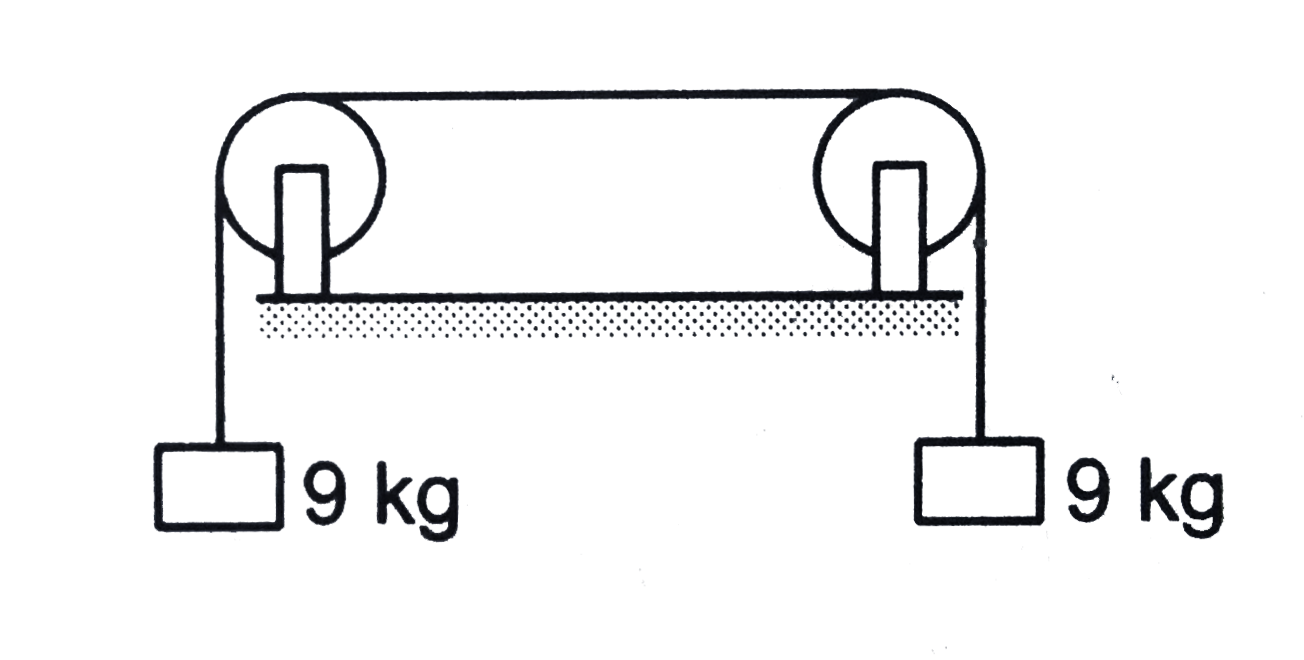Complete Solutions to Practice Exercise 6.5 of chapter WAVES of Class 12 book with complete answers and questions
| Class 12 | PHYSICS |
| Chapter | WAVES |
| PHYSICS GALAXY | Practice Exercise 6.5 |
| Number Of Questions | 16 |
| Academic Year | 2023-24 |
A steel wire of length ` 1 m` and density `8000 kg//m^(3)` is stretched tightly between two rigid supports . When vibrating in its fundamental mode , its frequency is `200 Hz`.
a. What is the velocity of transverse wave along this wire ?
b. What is the longitudinal stress in the wire ?
c. If the maximum acceleration of the wire is `880 m//s^(2)`, what is the amplitude of vibration at the midpoint ?
View SolutionA steel wire of length ` 1 m` and density `8000 kg//m^(3)` is stretched tightly between two rigid supports . When vibrating in its fundamental mode , its frequency is `200 Hz`.
a. What is the velocity of transverse wave along this wire ?
b. What is the longitudinal stress in the wire ?
c. If the maximum acceleration of the wire is `880 m//s^(2)`, what is the amplitude of vibration at the midpoint ?
View SolutionA steel wire of length ` 1 m` and density `8000 kg//m^(3)` is stretched tightly between two rigid supports . When vibrating in its fundamental mode , its frequency is `200 Hz`.
a. What is the velocity of transverse wave along this wire ?
b. What is the longitudinal stress in the wire ?
c. If the maximum acceleration of the wire is `880 m//s^(2)`, what is the amplitude of vibration at the midpoint ?
View SolutionA sonometer wire having a length of 1.50 m between the bridges vibrates in its second harmonic in resonance with a tuning fork of frequency 256 Hz. What is the speed of the transverse wave on the wire ?
View SolutionThe length of the wire shown in figure between the pulley is 1.5 m and its mass is 12.0 g. Find the frequency of vibration with which the wire vibrates in two loops leaving the middle point of the wire between the pulleys at rest.

View SolutionA steel wire fixed at both ends has a fundamental frequency of 200 Hz. A person can hear sound of maximum frequency 14 kHz. What is the highest harmonic that can be played on this string which is audible to the person ?
View SolutionFigure shows a string stretched by a block going over a pulley. The string vibrates in its tenth harmonic in unison with a particular tuning fork. When a beaker containing water is brought under the block so that the block is completely dipped into the beaker, the string vibrates in its eleventh harmonic. Find the density of the material of the block.
 .
.
View SolutionA wire of diameter `0.04 cm` and made of steel of density `8000 kg//m^(3)` is under a tension of `80 N`. A fixed length of `50 cm` is set into transverse vibrations . How would you cause vibrations of frequency `840 Hz` to predominate in intensity ?
View SolutionThe displacement of the medium in a sound wave is given by the equation `y_(1) = A cos(ax + bt)` where `A`, `a and b` are positive constants. The wave is reflected by an obstacle situated at `x = 0`. The intensity of the reflected wave is `0.64` times that of the incident wave.
(a) What are the wavelength and frequency of incident wave?
(b) Write the equation for the reflected wave.
( c ) In the resultant wave formed after reflection, find the maximum and minimum values of the particle speeds in the medium.
(d) Express the resultant wave as a superposition of a standing wave and a travelling wave. What are the positions of the antinodes of the standing wave ? What is the direction of propagation of travelling wave?
View SolutionA uniform horizontal rod of length 40 cm and mass 1.2 kg is supported by two identical wires as shown in figure. Where should a mass of 4.8 kg be placed on the rod so that the same tuning fork may excite the wire on left into its fundamental vibrations and that on right into its first overtone ? Take `g=10ms^-2`

View SolutionA 2 m-long string fixed at both ends is set into vibrations in its first overtone. The wave speed on the string is 200 m s and the amplitude is 0.5 cm. (a) Find the wavelength and the frequency. (b) Write the equation giving the displacement of different points as a function of time. Choose the X-axis along the string with the origin at one end and t = 0 at the instant when the point x= 50 cm has reached its maximum displacement.
View SolutionA 2 m-long string fixed at both ends is set into vibrations in its first overtone. The wave speed on the string is 200 m s and the amplitude is 0.5 cm. (a) Find the wavelength and the frequency. (b) Write the equation giving the displacement of different points as a function of time. Choose the X-axis along the string with the origin at one end and t = 0 at the instant when the point x= 50 cm has reached its maximum displacement.
View SolutionThree resonant frequencies of a string are 90, 150 and 210 Hz. (a) Find the highest possible fundamental frequency of vibration of this string. (b) Which harmonics of the fundamental are the given frequencies ? (c) Which overtones are these frequencies ? (d) If the length of the string is 80 cm, what would be the speed of a transverse wave on this string ?
View SolutionThree resonant frequencies of a string are 90, 150 and 210 Hz. (a) Find the highest possible fundamental frequency of vibration of this string. (b) Which harmonics of the fundamental are the given frequencies ? (c) Which overtones are these frequencies ? (d) If the length of the string is 80 cm, what would be the speed of a transverse wave on this string ?
View SolutionThree resonant frequencies of a string are 90, 150 and 210 Hz. (a) Find the highest possible fundamental frequency of vibration of this string. (b) Which harmonics of the fundamental are the given frequencies ? (c) Which overtones are these frequencies ? (d) If the length of the string is 80 cm, what would be the speed of a transverse wave on this string ?
View SolutionThree resonant frequencies of a string are 90, 150 and 210 Hz. (a) Find the highest possible fundamental frequency of vibration of this string. (b) Which harmonics of the fundamental are the given frequencies ? (c) Which overtones are these frequencies ? (d) If the length of the string is 80 cm, what would be the speed of a transverse wave on this string ?
View Solution
Practice Exercise 6.5 questions and complete solutions for chapter WAVES of GK PUBLICATIONS PHYSICS (HINGLISH) of Class 12
All Exercises from PHYSICS GALAXY Class 12 PHYSICS WAVES
- Advance MCQs with One or More Options Correct
- Conceptual MCQs Single Option Correct
- Discussion Question
- Illustrative
- Numerical MCQs Single Options Correct
- Practice Exercise 6.1
- Practice Exercise 6.2
- Practice Exercise 6.3
- Practice Exercise 6.4
- Practice Exercise 6.5
- Practice Exercise 6.6
- Practice Exercise 6.7
- Practice Exercise 6.8
- Unsolved Numerical Problems for Preparation of NSE, INPhO & IPhO